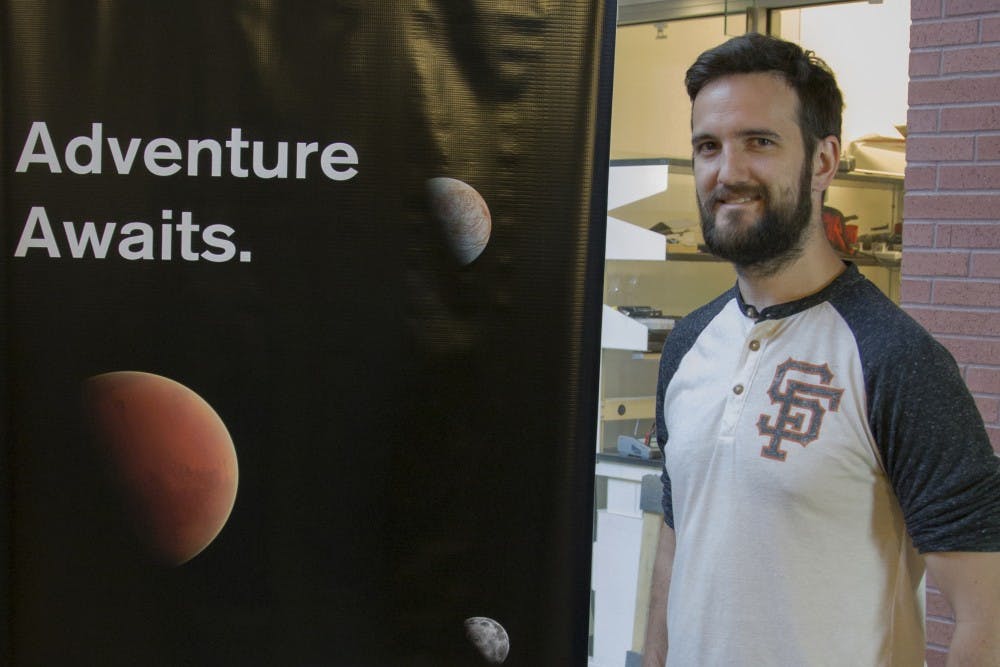With the end goal of monitoring space threats like meteors and solar flares, ASU students from the School of Earth and Space Exploration program are partnering with the U.S. Air Force to design a satellite.
The satellite, named Space Weather and Impact Monitoring Satellite or "SWIMSat," is part of the Air Force's university nanosatellite program.
Planetary science professor Erik Asphaug, who is advising the mission, said the team will practice implementing two types of observations on one mission. They will spend time looking at solar activity and meteors separately.
"The reason we’re designing it the way we’ve got it, is in part because these are two aspects of space weather,” Asphaug said. “Part of it is to have on-time and off-time for both experiments.”
Although Asphaug said dedicating two missions to one satellite is ambitious, he believes the students are ready for this type of project.
“Most students are passionate about working in-depth at spacecraft design,” he said. “We have the expertise and the resources. This can make sure students get a realistic experience.”
Asphaug said the team’s research may have an impact on the Earth's safety, citing that meteors pose a modest threat, comparable to a volcanic eruption. Solar flares could also be devastating.
In 1859 a major solar flare, known as the Carrington Event, wiped out telegraphs around the world, and was the first major instance of a solar flare affecting technology. With a higher technological reliance than ever, Asphaug said a solar flare of this level would cause major problems.
“If the same event were to happen today, the estimation would be that it would shut down grids for up to ten years,” he said. “If we monitored the sun and saw a big flare, we’d have time to protect things like people in orbit.”
Project manager and graduate student, Victor Hernandez, said the major challenge of designing this satellite is the process of fitting everything onto a small device.
The satellite will have two cameras on board, including a coronagraph – a device used to observe the outer part of the sun and detect solar flares – typically used on larger satellites.
“(The size) does make it more challenging,” Hernandez said. “But it makes us think.”
If successful, Hernandez said the team has plans to expand their research, with more satellites in the mission’s future.
“For the solar part, if the mission were to succeed, we’d build a constellation — multiple satellites,” he said. “We’d get a 360-degree view of solar activity.”
Alex Miller, leading optical instrument design, said having a coronagraph on the satellite can be vital to further research.
“In terms of instrumentation, it can be tough to cram all these optics into a small area,” Miller said. “But what this can prove is that a coronagraph can be placed on a small satellite. If this works, it can open up a whole new realm of heliophysics.”
Hernandez said the project is exciting because of how student-centered it is.
“For this project, it’s really student-managed,” he said. “Everything that comes out of it is resultant of the students.”
The students' freedom is one of the research's key elements. Although Miller, who is in the fourth year of his doctoral program, may only be a part of the team for the design process, he is still excited about the research.
“For me personally, it’s super exciting to put my hands on something that will get to go into outer space,” Miller said. “The whole point of these programs is to train grad students to have these experiences.”
Related Links:
The uncertain future of space exploration
ASU team helps prove existence of ancient lake on Mars
Reach the reporter at Ethan.Millman@asu.edu or follow @Millmania1 on Twitter.
Like The State Press on Facebook and follow @statepress on Twitter.




